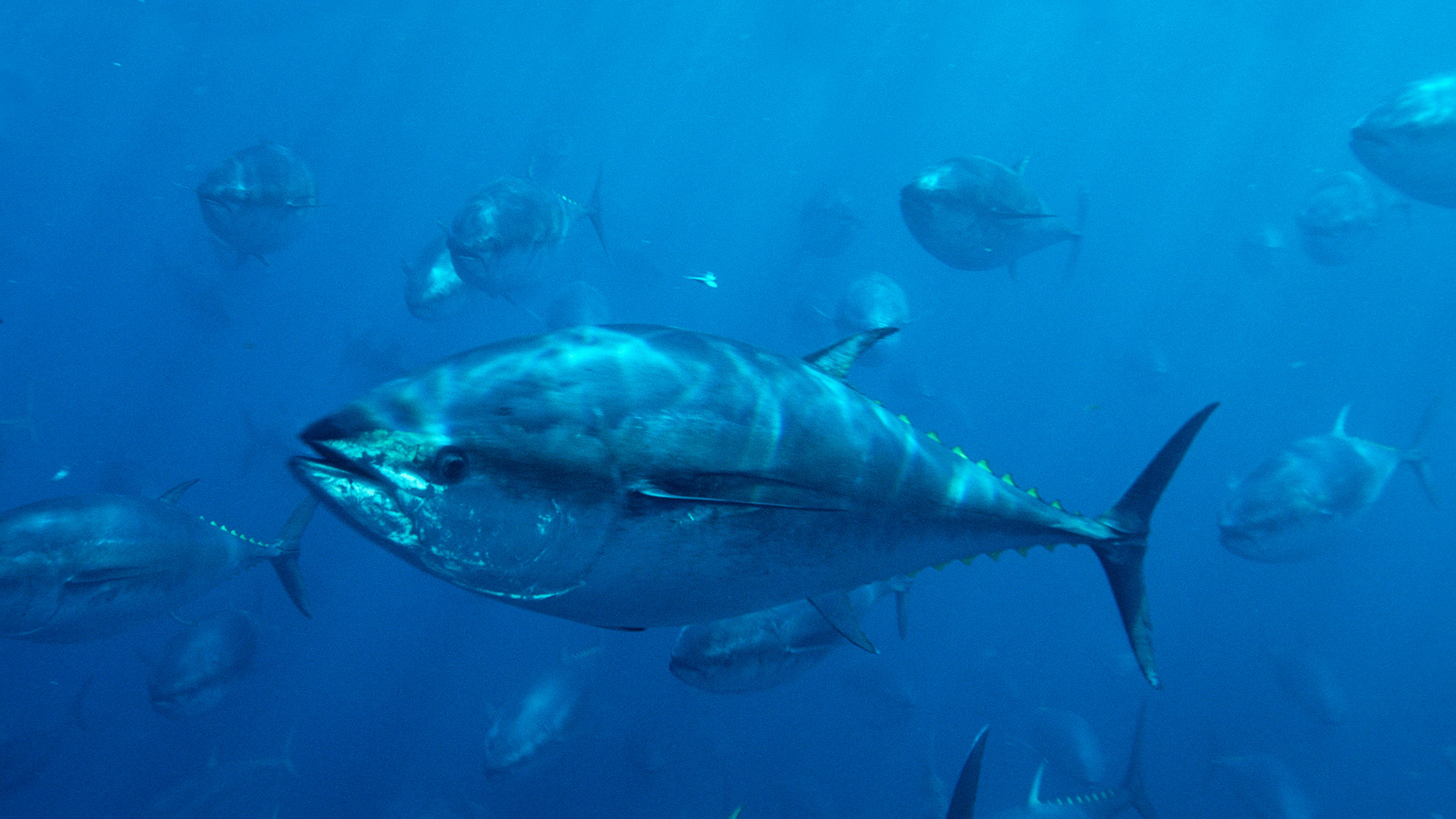Trade Restrictions Needed to Save Pacific Bluefin Tuna and Silky Sharks
 © Richard Ellis/SeaPics.com
© Richard Ellis/SeaPics.comPacific bluefin tuna.
The 89th meeting of the Inter-American Tropical Tuna Commission (IATTC) in Ecuador ended July 3 with little progress on new conservation measures for threatened and depleted populations of tuna and sharks. This outcome is becoming a familiar theme.
Unlike swift-swimming tuna, the process for managing international tuna fisheries can be slowgoing—and frustrating. The international governing bodies called regional fishery management organizations (RFMOs) run mostly by consensus. So no matter how threatened a particular animal may be, any objecting member country can stop proposed measures to protect that species.
That’s what just happened at the meeting of the IATTC, which manages fishing in the waters of the eastern Pacific Ocean.
The Pacific bluefin tuna population remains in a severely depleted state at just 4 percent of unfished levels, but the IATTC did nothing to halt overfishing. The two RFMOs that control tuna fishing in the eastern and western Pacific have not made sufficient attempts to reduce catch limits or adopt a long-term rebuilding plan for Pacific bluefin tuna. That inaction has left this critical population at risk of collapse.
So what’s next? In short, trade measures may be needed. If the Pacific RFMOs cannot coalesce around an ocean-wide plan that allows for the rebuilding of the Pacific bluefin population, it may be time to look at the prohibition of international trade through the Convention on International Trade in Endangered Species of Wild Fauna and Flora (CITES).
Of course, individual countries can take action on their own, as Mexico did. At the close of the IATTC meeting, Mexico announced that it will reduce its catch of Pacific bluefin from 3,000 to 2,750 metric tons next year. That curtailment should bring the overall harvest closer to scientifically recommended levels. Mexico’s move is a sign that hope for Pacific bluefin isn’t completely lost, but it must be followed by further action across the Pacific.
The IATTC also missed an opportunity at this meeting to safeguard declining shark populations, despite clear scientific evidence that they need protection.
Member governments could not reach consensus on steps to slow huge declines in the numbers of silky sharks. Adding these sharks to the list of those managed under what is known as CITES Appendix II is clearly necessary to protect these depleted predators. The IUCN Red List of Threatened Species classifies silky sharks in the eastern Pacific as vulnerable to extinction, and the science shows that many are being killed in the region’s tuna fisheries.
With preparations underway for the next CITES meeting in South Africa in 2016, countries that are serious about shark conservation should propose and support an Appendix II listing for silky sharks. That listing would mean that only sustainably caught silky sharks could be traded between countries or imported from the high seas.
These sharks are highly migratory and were recently included on Appendix II of the Convention on the Conservation of Migratory Species of Wild Animals, a clear call for better international cooperation to protect them. The IATTC did not heed that call. A CITES listing, however, could ensure that proper management is put in place to allow silky sharks to recover.
Regulating international trade won’t solve every management problem, but it could be the next step that conservation-minded governments seek to help those species that cannot survive the status quo. The push to persuade RFMO members to fulfil their mandate must continue, but until they do, ending the unsustainable trade that is driving population declines may be the next best option.
On a more positive note, delegates supported milestone protections for mobulid rays to help preserve species such as manta and devil rays that are vulnerable to overfishing in the eastern Pacific. The Commission agreed to a measure offered by the European Union—the first of its kind adopted by an RFMO—that prohibits retention of rays caught incidentally, though it includes exemptions for some artisanal fishing vessels. The measure also outlines techniques that can help fishers with live release.
IATTC countries also agreed on a measure that clarifies existing provisions for listing vessels that have engaged in illegal fishing, as well as delisting those no longer linked to illicit activities. The measure isn’t perfect. Although its expanded scope covers all types of vessels that target IATTC-managed species, it exempts fishing boats less than 24 meters long, meaning that a vessel as long as a seven story building is tall would be ineligible for listing.
IATTC members have been discussing adoption of minimum standards for port inspections for five years. They still did not reach consensus on a new scheme this year, even though the standards are among the most effective tools for deterring illegal fishing. The inaction continued despite an unprecedented effort by countries in the region—mainly developing countries—to improve a proposal that supports increased enforcement capacity. Still, this effort could pay off next year, when we hope to see final adoption of such a measure.
Elizabeth Wilson directs Pew’s international ocean policy work.







